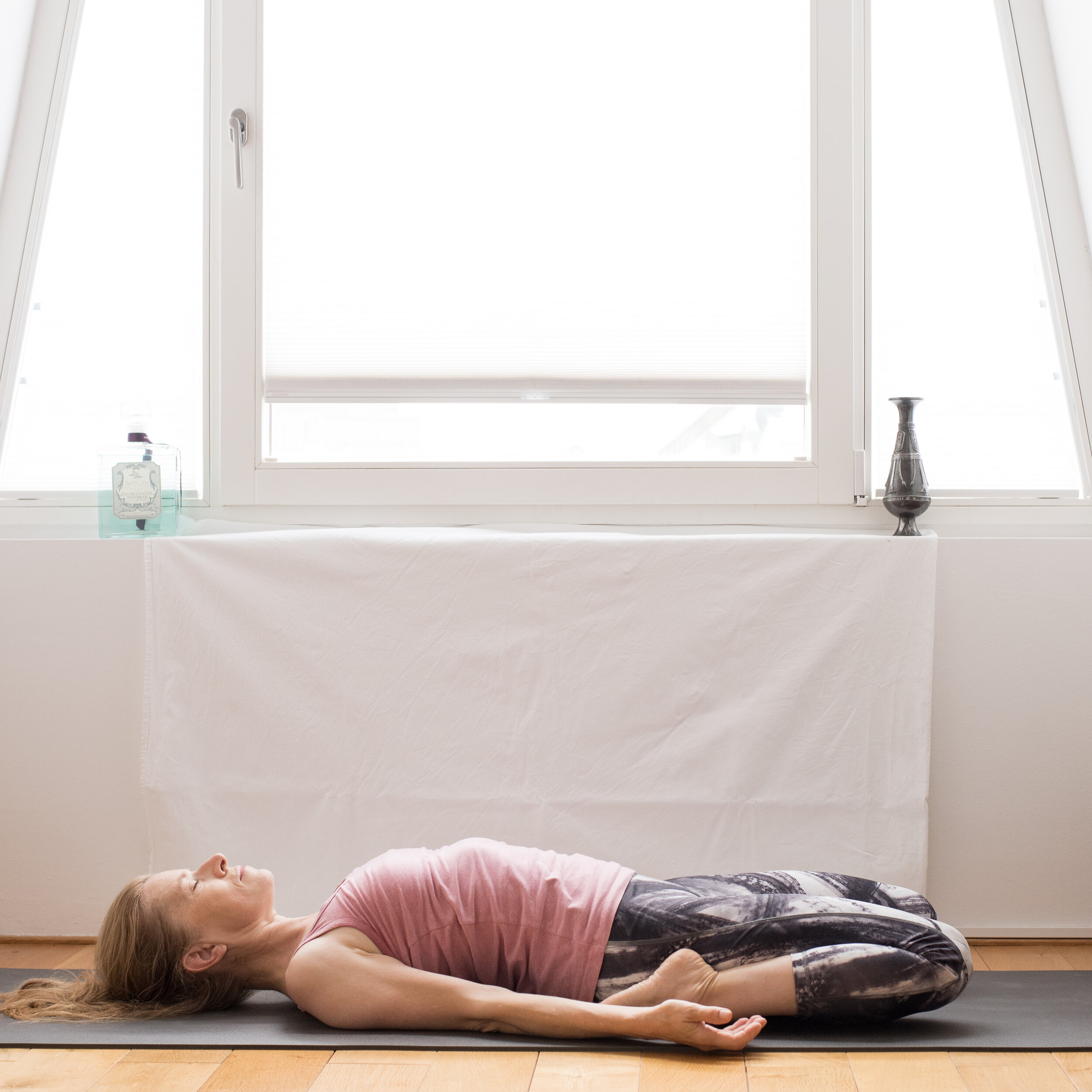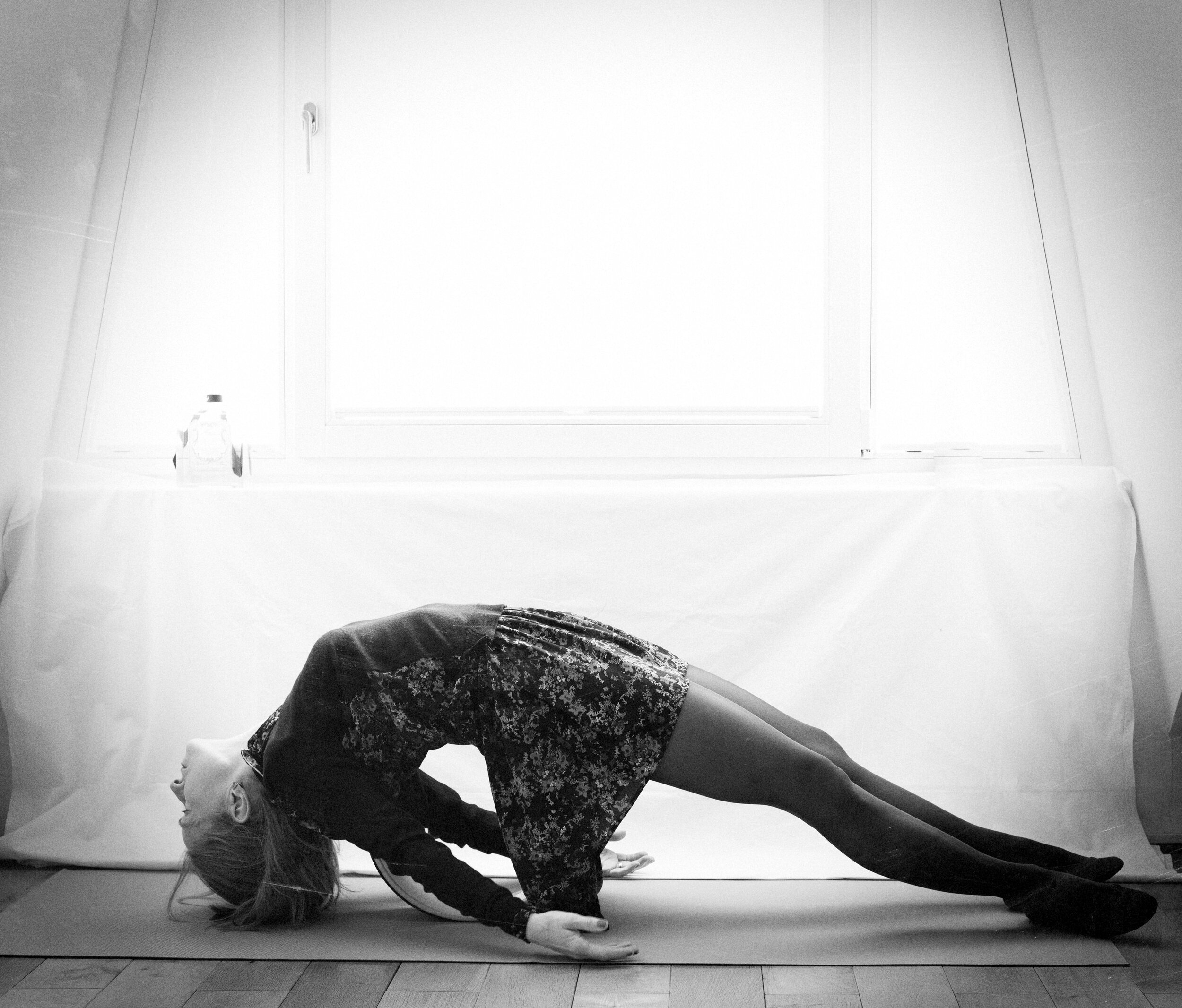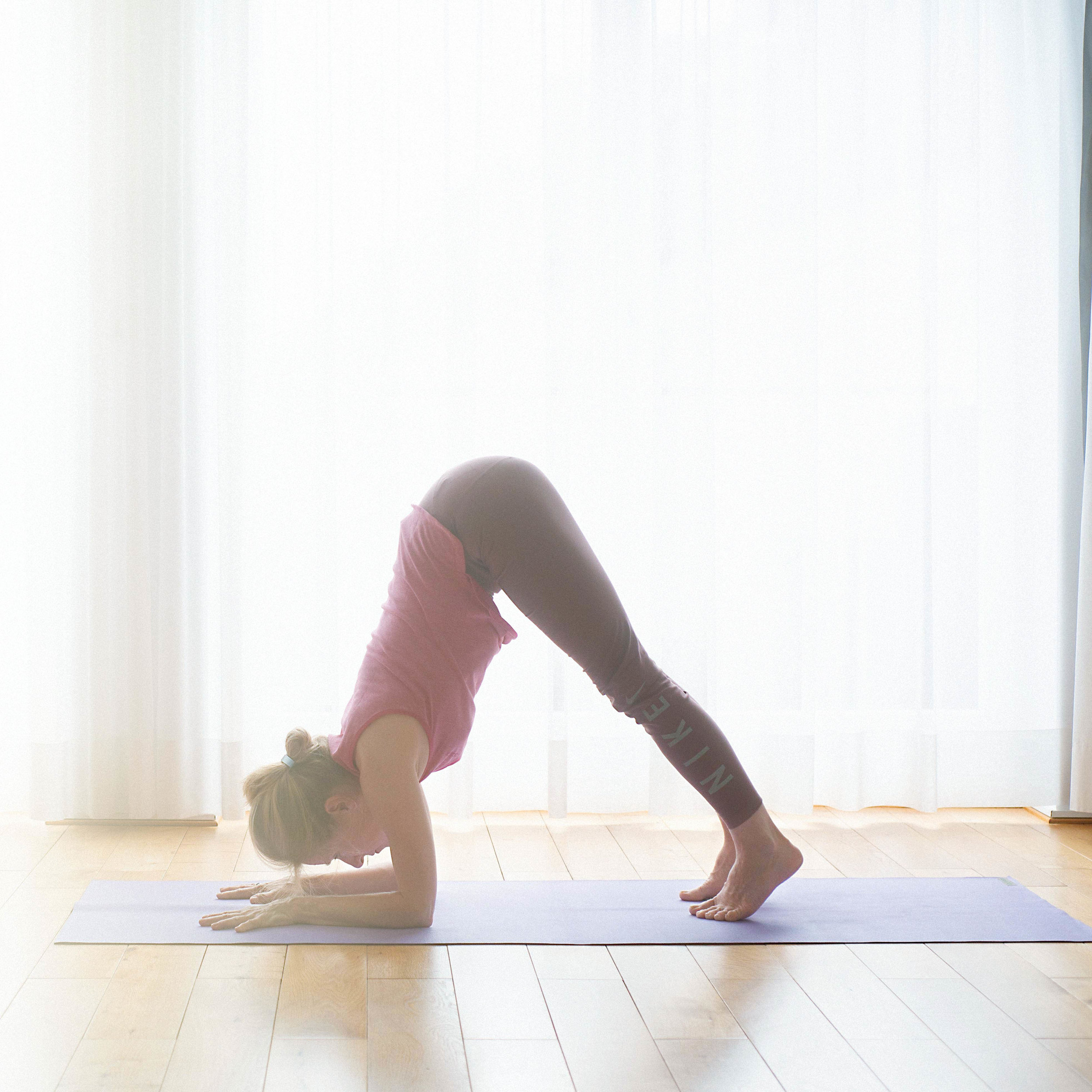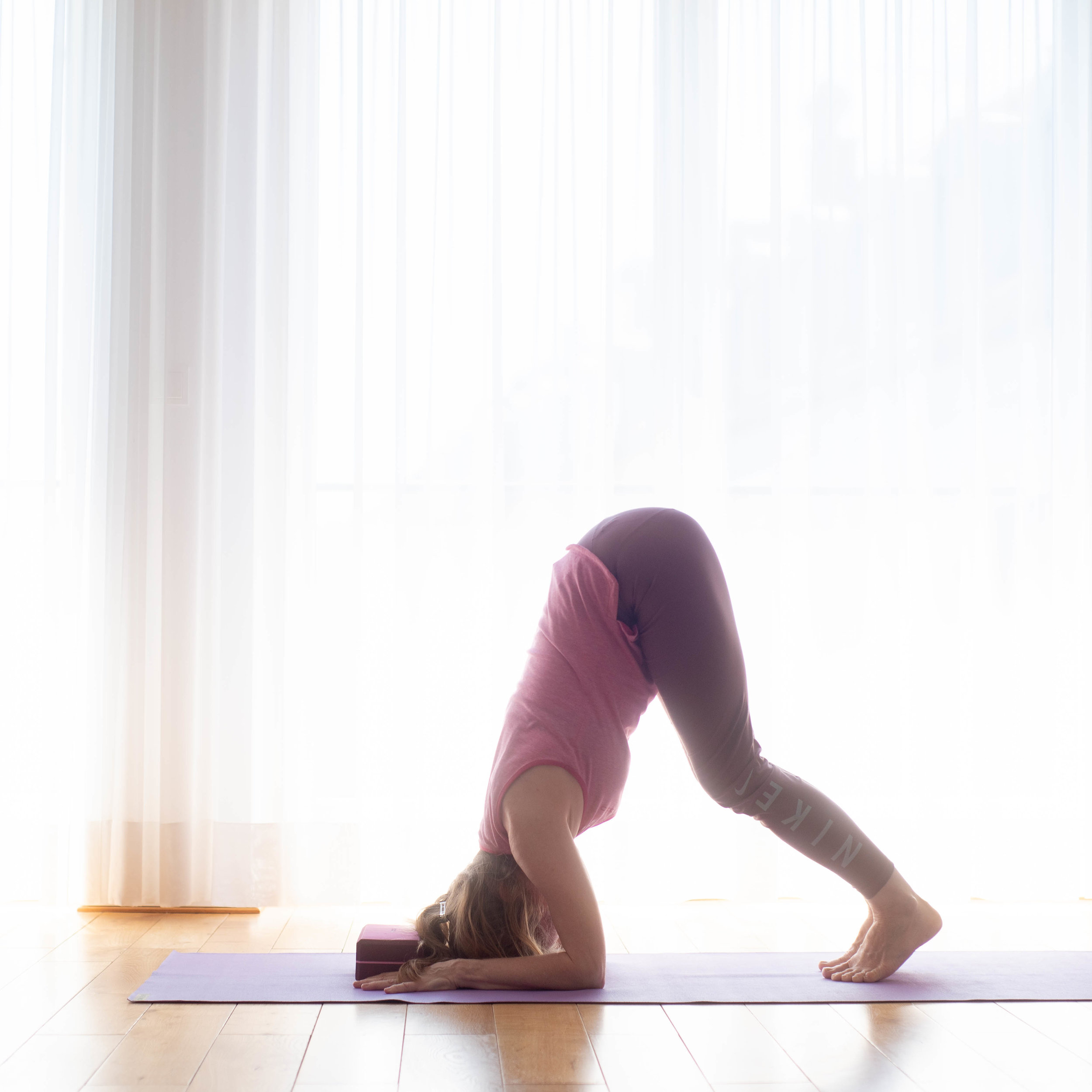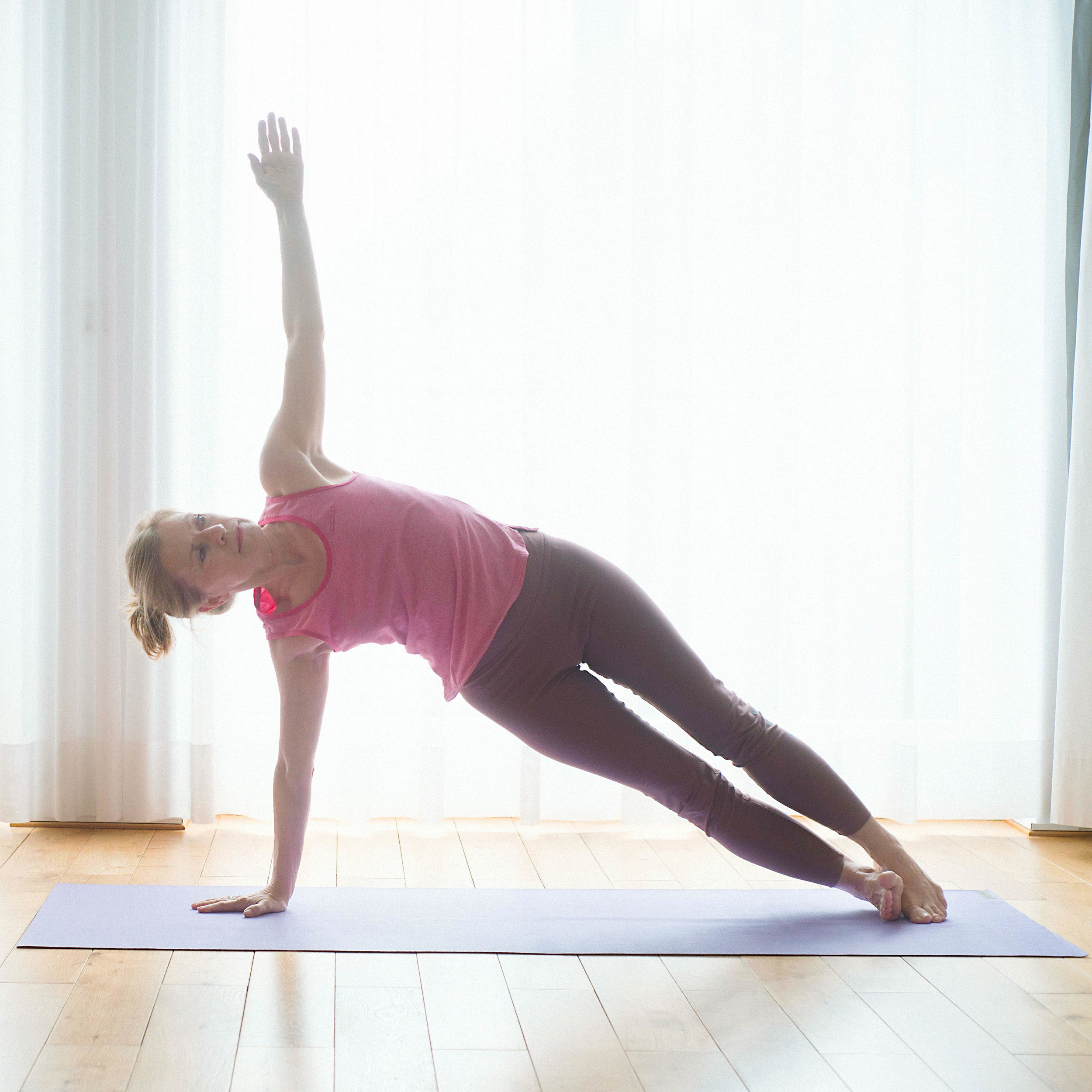Bhekasana, August 2020
Bhekasana is the next asana after salabhasana in the intermediate Ashtanga series. It’s not my favorite asana. It feels awkward to press the feet to the ground. It’s an asana that is part of the game. It teaches me to practice also less liked asanas. Likes and dislikes change. Simply being an observer is a good mental exercise.
Usually I do an extra exercise before this pose:
This exercise is rather easy if one allows that the knees move away from each other. The challenge is to keep the thighs parallel to each other. This lengthens the thighs. It stretches the front muscles of the legs. This allows to get deeper into back bending.
Some asanas I like, others I don’t like. I practice them all with the same passion. Something would be missed if I practiced only asanas that I like and that I’m able to do nicely. The variety of different asanas makes the practice so interesting.

